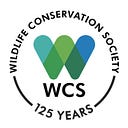WCS 3-Sentence Science
Chasing Species’ “Intactness”
May 31, 2019
Each year, Wildlife Conservation Society scientists publish more than 300 peer-reviewed studies and papers. “WCS 3-Sentence Science” is a regular tip-sheet — in bite sized helpings — of some of this published work.
Here we present the WCS’s work on the importance of landscape intactness in Africa, Asia, and the Americas:
- In an effort to better protect the world’s last ecologically intact ecosystems, researchers developed a new metric called “The Last of the Wild in Each Ecoregion” (LWE), which aimed to quantify the most intact parts of each ecoregion.
- They tested whether LWE against intact forest landscapes (IFL) — another technique to map ecological integrity at the global scale — to see which could adequately capture the abundance of a set of large mammal species sensitive to human disturbance, by mapping the abundance of nine large mammal species from Africa, Asia and the Americas and comparing them to the areas identified by the LWE and IFL approaches.
- The results show that neither IFL nor LWE identifies areas of ecologically intact fauna well enough, underscoring a strong need to obtain additional site-level survey data to confirm faunal intactness.
Study and Journal: “Are we capturing faunal intactness? A comparison of intact forest landscapes and a first scoping of Key Biodiversity Areas of Ecological Integrity” from Frontiers in Forests and Global Change
WCS Co-Author(s): Daniele Baisero, Hedley Grantham, Fiona Maisels, Justina Ray, Eric Sanderson, Samantha Strindberg , WCS
For more information, contact: Stephen Sautner, 718–220–3682, ssautner@wcs.org.
